Key takeaways
- The Northern Lights are a captivating phenomenon caused by solar particles interacting with Earth’s atmosphere, creating a unique and unpredictable visual experience.
- The best time for photographing the Northern Lights in Iceland is from late September to early April, when nights are longer and darker.
- Essential gear for capturing the Northern Lights includes a sturdy tripod, a camera with manual settings, and spare batteries to handle cold conditions.
- Mastering techniques like long exposure, manual focus, and careful post-processing can significantly enhance the quality of Northern Lights photographs.
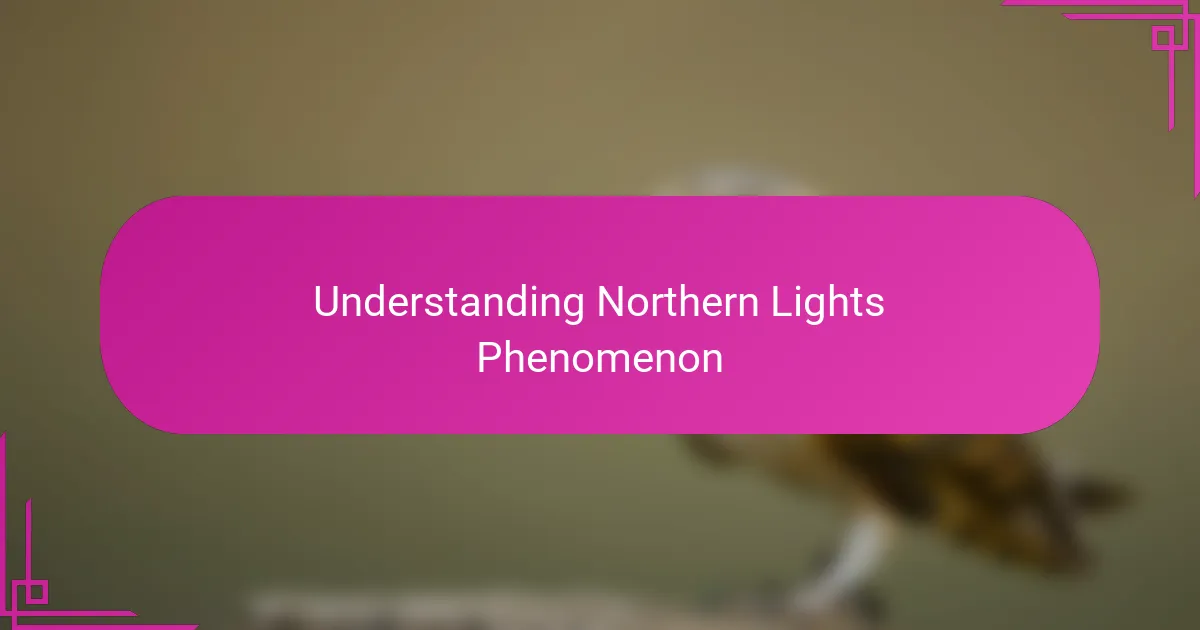
Understanding Northern Lights Phenomenon
The Northern Lights, or Aurora Borealis, are nature’s grand light show, caused by charged particles from the sun colliding with Earth’s atmosphere. I remember the first time I truly grasped this—it felt like witnessing the invisible energy of the universe painting the sky with color. Have you ever thought about how something so delicate and fleeting is actually driven by immense solar forces millions of miles away?
What fascinates me most is the unpredictability of this phenomenon. Despite all the science, you never know exactly when or how the lights will appear. It’s this mystery that makes every sighting feel personal and almost magical, like the sky decided to share a secret just with you. Don’t you think that adds an extra layer of excitement for photographers chasing the perfect shot?
Understanding the science behind the Northern Lights enriches the experience but doesn’t diminish the wonder. Instead, it connects me to a larger cosmic rhythm, reminding me of my place in the vastness of space. Have you noticed how knowing a bit more about something can deepen your appreciation for its beauty?
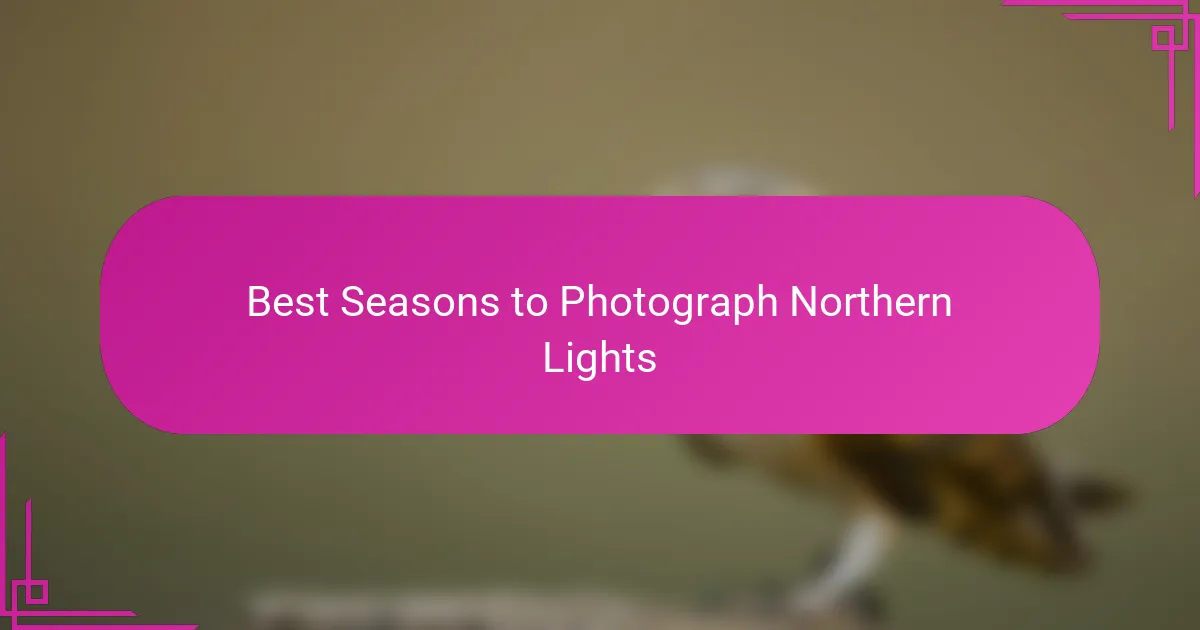
Best Seasons to Photograph Northern Lights
When it comes to photographing the Northern Lights in Iceland, I found that the best seasons are from late September to early April. During these months, the nights are longer and darker, which means there’s more time for those dazzling colors to dance across the sky. Have you ever noticed how the deep winter darkness seems to heighten your senses, making every light flicker feel even more magical?
I remember being out on a crisp October night, camera ready, feeling the chill but totally captivated by the sky’s show. It’s interesting how the early autumn and late winter months offer a perfect balance—not too cold to be unbearable but cold enough to have clear skies. Don’t you think that finding this sweet spot makes the whole photography experience more enjoyable?
Of course, the unpredictable nature of the Aurora Borealis means you have to be patient no matter the season, but choosing the right months definitely stacks the odds in your favor. I always recommend planning trips around the new moon in these seasons to avoid extra light pollution—because capturing those vivid greens and purples is what we’re all after, right?
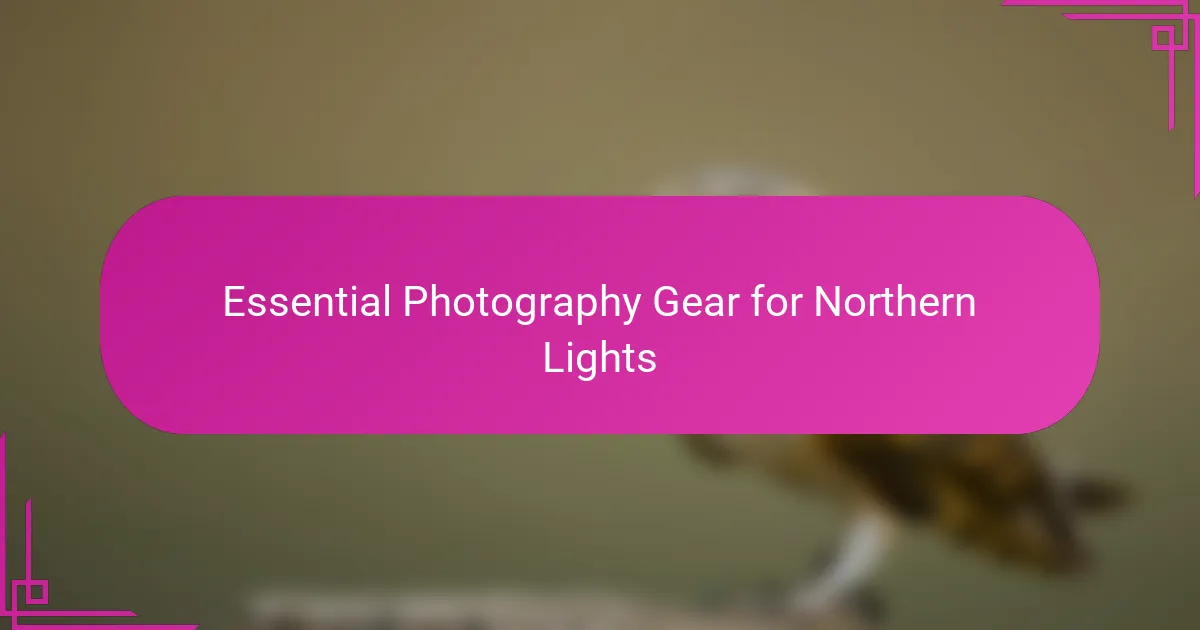
Essential Photography Gear for Northern Lights
Capturing the Northern Lights isn’t just about showing up with a camera; it’s about having the right gear to bring those fleeting colors to life. For me, a sturdy tripod was non-negotiable since long exposure shots are the bread and butter of aurora photography. Have you ever tried balancing your camera on a rock only to find your photo blurred? That’s a lesson I learned the hard way.
A camera with manual settings and good low-light performance was another must-have. I rely heavily on adjusting the ISO, aperture, and shutter speed to find that sweet spot where the lights glow without too much noise. Do you know how satisfying it feels when you nail those settings and see your image come alive on the screen?
And then there’s the often-overlooked, yet essential, spare batteries. The cold Icelandic nights drain them faster than you’d expect. I once missed an incredible aurora display because I didn’t plan for this—a mistake I won’t repeat. Don’t you think it’s better to be over-prepared than miss that perfect moment?
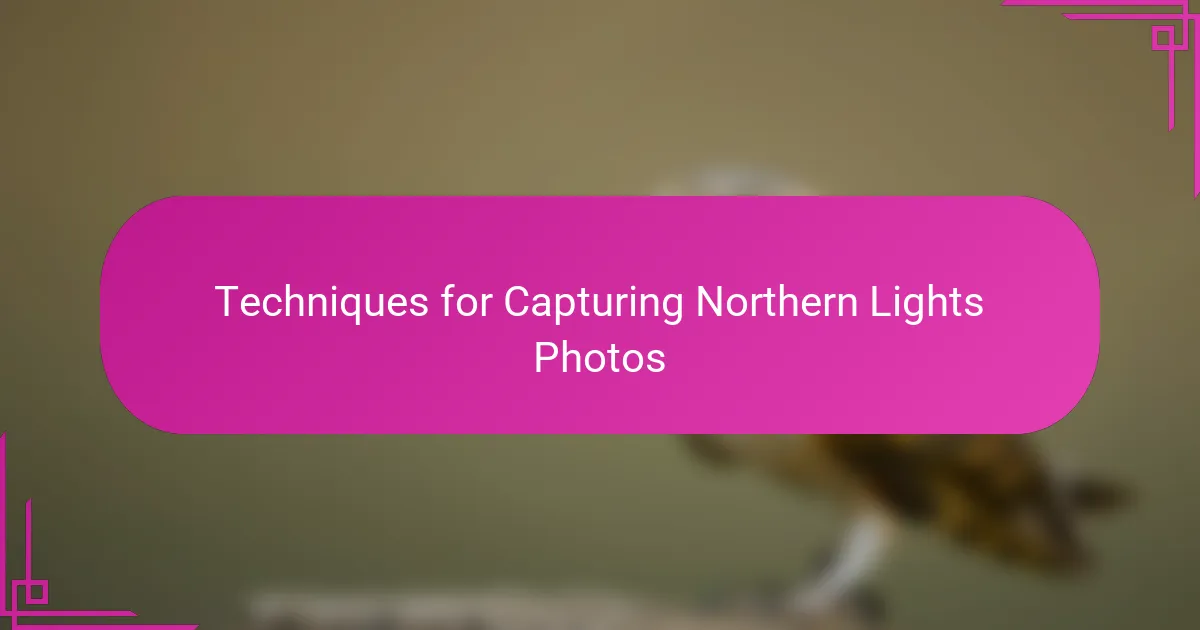
Techniques for Capturing Northern Lights Photos
Getting the Northern Lights to shine through your photos means mastering long exposure techniques. I found that setting my shutter speed between 5 to 25 seconds worked wonders, allowing the camera’s sensor to soak up enough light without turning the aurora into an unrecognizable blur. Have you ever stumbled on that perfect balance where the lights stay sharp yet bright? It’s like finding the rhythm of the sky and syncing your camera with it.
Another trick I swear by is using a wide-angle lens with a wide aperture, usually around f/2.8 or lower. This lets in more light and captures the vastness of the sky, giving those swirling auroras the dramatic presence they deserve. I remember feeling amazed at how much more alive my images looked simply because I wasn’t zoomed in too tight—it’s almost like you can feel the cold air and hear the silence through the frame.
Don’t forget about focusing manually—auto-focus struggles in darkness, and that’s a trap I fell into more than once. Once I switched to manual focus set at infinity, my shots became crisp, and the dancing lights popped like they were part of a vivid dream. Have you tried focusing by flashlight before shooting? It’s a simple step that can turn a mediocre photo into a breathtaking masterpiece.
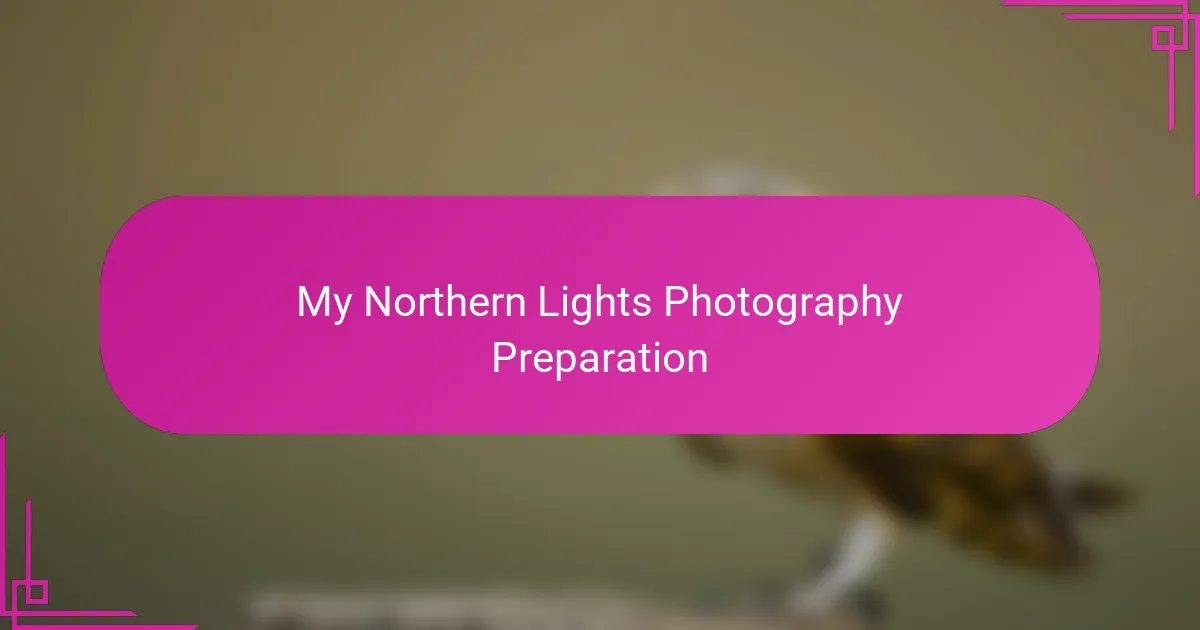
My Northern Lights Photography Preparation
Preparing for Northern Lights photography felt like gearing up for a cosmic adventure. I spent hours researching and packing—making sure my tripod was rock solid and my camera batteries fully charged, knowing Iceland’s biting cold could drain power faster than I imagined. Have you ever packed and unpacked your bag multiple times just to be certain nothing vital was left behind?
I also practiced adjusting my camera settings indoors, trying to find that sweet spot for ISO and shutter speed before facing the unpredictable Icelandic skies. It made me feel a little more in control of a phenomenon that’s inherently wild and spontaneous. Isn’t there something comforting about preparing in detail, even when you can’t predict what nature will throw at you?
Lastly, layering up with proper winter clothing became part of my preparation ritual—it wasn’t just about photography gear but being physically ready to stand motionless in freezing temperatures for those perfect seconds. I remember catching my breath, not just from the cold, but from the anticipation of the first shimmering light—do you think being ready on every front makes the wait feel less daunting?
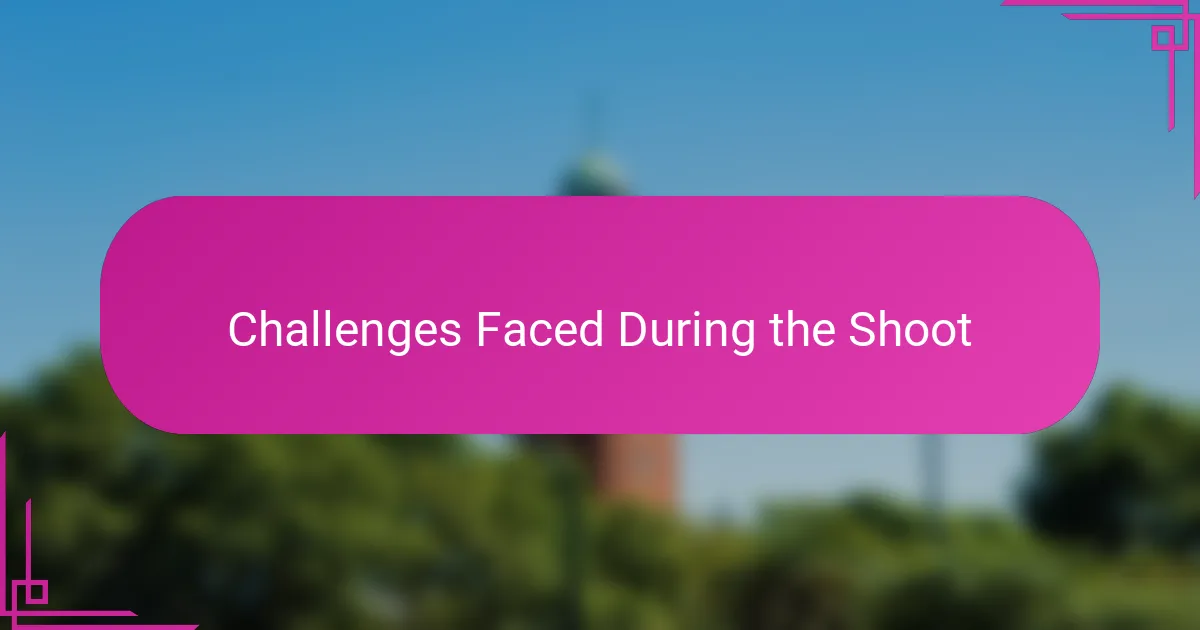
Challenges Faced During the Shoot
The biting cold was one of the toughest challenges for me during the shoot. Standing still for long exposures while temperatures dropped well below freezing tested both my patience and endurance. Have you ever tried to keep your fingers steady on cold metal without losing feeling? Trust me, it’s a battle.
Another hurdle was the unpredictable movement of the lights themselves. I remember moments when the aurora would suddenly fade or swirl out of frame just as I pressed the shutter. It felt like trying to catch a ghost—frustrating, yet strangely thrilling. Have you experienced that fleeting magic slipping away right before your eyes?
Focusing in pitch darkness was no easy feat either. Auto-focus often failed, and I had to switch to manual focus, which took trial and error to get right. I recall using a flashlight to pre-focus on distant objects, a small trick that made a huge difference in turning blurry attempts into sharp, vivid images. Isn’t that the kind of little win that keeps you going through a tough shoot?
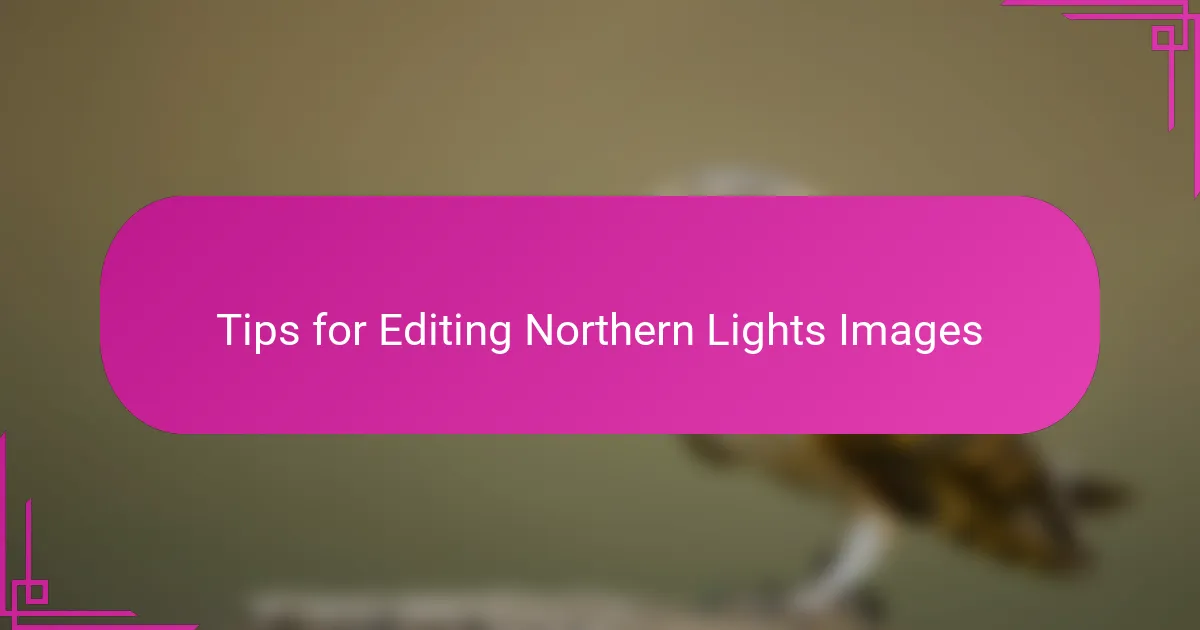
Tips for Editing Northern Lights Images
Editing Northern Lights images always feels like the final creative step where the magic truly comes alive. I find that boosting the contrast carefully can make the colors pop without turning the photo into something unrealistic. Have you ever struggled with balancing vibrancy and authenticity? It’s tricky, but sharpening those outlines softly helps the aurora’s movement stand out while keeping the night sky deep and rich.
One editing tip that changed my workflow was adjusting the white balance away from the camera’s auto setting. Sometimes the greens and purples look washed out or off-color straight out of the camera. By warming or cooling the tones just a touch, I managed to bring back the natural hues I witnessed that night—almost like reliving the moment all over again. Have you experimented with this? It’s a subtle shift but incredibly rewarding.
Noise reduction is another editing step that can’t be overlooked, especially when working with high ISO images from those dark Icelandic nights. I learned to apply noise reduction selectively; too much can wash out details and make the sky look flat, while too little leaves distracting grain. Finding that middle ground feels like sculpting the image delicately, ensuring the Northern Lights remain both vivid and pristine. Don’t you think the final edit should feel like those quiet, breathtaking seconds beneath Iceland’s stars?